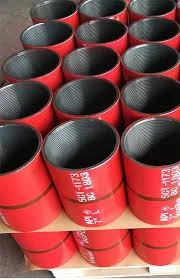- Afrikaans
- Albanian
- Amharic
- Arabic
- Armenian
- Azerbaijani
- Basque
- Belarusian
- Bengali
- Bosnian
- Bulgarian
- Catalan
- Cebuano
- Corsican
- Croatian
- Czech
- Danish
- Dutch
- English
- Esperanto
- Estonian
- Finnish
- French
- Frisian
- Galician
- Georgian
- German
- Greek
- Gujarati
- Haitian Creole
- hausa
- hawaiian
- Hebrew
- Hindi
- Miao
- Hungarian
- Icelandic
- igbo
- Indonesian
- irish
- Italian
- Japanese
- Javanese
- Kannada
- kazakh
- Khmer
- Rwandese
- Korean
- Kurdish
- Kyrgyz
- Lao
- Latin
- Latvian
- Lithuanian
- Luxembourgish
- Macedonian
- Malgashi
- Malay
- Malayalam
- Maltese
- Maori
- Marathi
- Mongolian
- Myanmar
- Nepali
- Norwegian
- Norwegian
- Occitan
- Pashto
- Persian
- Polish
- Portuguese
- Punjabi
- Romanian
- Russian
- Samoan
- Scottish Gaelic
- Serbian
- Sesotho
- Shona
- Sindhi
- Sinhala
- Slovak
- Slovenian
- Somali
- Spanish
- Sundanese
- Swahili
- Swedish
- Tagalog
- Tajik
- Tamil
- Tatar
- Telugu
- Thai
- Turkish
- Turkmen
- Ukrainian
- Urdu
- Uighur
- Uzbek
- Vietnamese
- Welsh
- Bantu
- Yiddish
- Yoruba
- Zulu
what is a bull plug used for
Understanding Bull Plugs Functions and Uses
Bull plugs are a type of equipment primarily used in the oil and gas industry for various applications. To understand what a bull plug is, it's essential to first grasp the context in which it operates. Bull plugs are designed to provide a reliable seal within a pipeline system, facilitating safe and effective operations.
Definition and Purpose of Bull Plugs
A bull plug is essentially a solid plug used to seal off the end of a pipe or a fitting. They are commonly made from materials that can withstand high pressure and various temperatures, ensuring durability and reliability. The purpose of employing a bull plug is multifaceted; it helps prevent the escape of fluids or gases, protects the interior of pipes from contaminants, and ensures the safety of personnel working on or near the piping systems.
Applications of Bull Plugs
Bull plugs are used in various applications, including
1. Oil and Gas Industry In this sector, bull plugs are essential for sealing off unused ports on pipelines and ensuring that the flow of oil or gas is maintained without leaks. Given the hazardous nature of these substances, effective sealing is critical.
2. Water Supply Systems In municipal and industrial water systems, bull plugs can be used to temporarily seal lines during maintenance work or repair. This ensures that water pressure is controlled and that service interruptions are minimized.
3. Chemical Processing In chemical plants, bull plugs help in isolating sections of piping for maintenance while preventing the escape of potentially harmful chemicals. Their robust construction is crucial to preventing leaks that could lead to accidents or environmental issues.
what is a bull plug used for

4. HVAC Systems Bull plugs can also find their use in heating, ventilation, and air conditioning systems to block off certain ports and ensure proper functioning of these systems.
Design and Specifications
Bull plugs come in various sizes and specifications to fit different types and sizes of pipes and fittings. They are designed to provide a snug fit within the pipe to prevent leakage. The materials used for manufacturing bull plugs can include stainless steel, plastic, and high-density polyethylene, depending on the requirements of the specific application. The choice of material often relates to factors such as pressure, temperature, and the nature of the substance being contained.
Installation and Maintenance
The installation of a bull plug is relatively straightforward but must be done carefully to ensure a proper seal. In most cases, it involves cleaning the pipe’s interior, checking for any debris, and then inserting the bull plug securely. Proper torque specifications must also be adhered to, ensuring that the plug is neither too loose (which may cause leaks) nor too tight (which could damage the pipe).
Regular inspections are also necessary, especially in high-pressure applications. Over time, the seals and materials may degrade due to pressure, temperature fluctuations, or exposure to chemicals. Routine checks help identify any potential issues before they escalate into larger problems that could disrupt operations or pose safety risks.
Conclusion
In summary, bull plugs are a vital component in numerous industrial applications, particularly in the oil and gas industry. By providing a reliable and effective means to seal off pipelines, they not only help maintain efficiency but also ensure safety in potentially dangerous environments. Understanding their purpose, design, and proper maintenance is crucial for professionals working in sectors where these devices play an integral role. Their importance cannot be overstated as they contribute significantly to safe operational practices in various fields encompassing energy, water supply, and chemical processing.
-
Tubing Pup Joints: Essential Components for Oil and Gas OperationsNewsJul.10,2025
-
Pup Joints: Essential Components for Reliable Drilling OperationsNewsJul.10,2025
-
Pipe Couplings: Connecting Your World EfficientlyNewsJul.10,2025
-
Mastering Oilfield Operations with Quality Tubing and CasingNewsJul.10,2025
-
High-Quality Casing Couplings for Every NeedNewsJul.10,2025
-
Boost Your Drilling Efficiency with Premium Crossover Tools & Seating NipplesNewsJul.10,2025







